Julia Vergin
DW
09/09/2023
Worldwide, many regions are afflicted with frequent earthquakes. While high magnitude earthquakes are rare, Morocco's Atlas Mountains are a site of heavy tectonic plate activity.
An earthquake measuring 6.8 on the moment magnitude scale (MMS) has shaken Morocco. With its epicenter in the Atlas Mountains, about 70 kilometers (40 miles) from Marrakech, the earthquake was also felt in neighboring Algeria and as far north as Portugal.
The Atlas Mountains span about 2,300 kilometers across Morocco, Algeria and Tunisia. Known as fold mountains, they were created by the collision of tectonic masses: the Eurasian Plate to the north and the African Plate to the south.
"The Atlas Mountains are on the border between the two plates and are therefore a known as earthquake zone," said Fabrice Cotton, a professor of seismology at the German Research Center for Geosciences in Potsdam.
How earthquakes happen
The Earth's crust is formed like a jigsaw puzzle, with different individual pieces slotting together. The puzzle includes some gigantic oceanic plates and several smaller continental plates. Exactly how many small and very small tectonic plates there are is subject to scientific debate.
All of these plates are "floating" on the molten core of the Earth. Because magma swells from the core at certain fracture points, the plates have shifted and migrated a few centimeters every year for billions of years. They move away from each other, rub against each other or push up against each other, causing the continent above them to move. Such movements are known as plate tectonics.
These tectonic shifts regularly cause plates to collide. When the resulting tension that builds up in the plate's rock becomes too great, it can fracture and parts will break away with a jolt. Waves of pressure emanate from this epicenter and reach the Earth's surface, where they are felt as earthquakes.
Regions that fall on fault lines, where tectonic plates meet, are therefore particularly prone to earthquakes. Any quake reaching 5.0 or above on the moment magnitude scale can cause visible damage to buildings, for example.
If a quake happens under an ocean, it could cause a tsunami. These high-velocity, expanding waves can lead to deadly flooding if they hit the mainland. It is very, very difficult to predict quakes in such regions due to constant seismic activity, Cotton said.
"The only way to protect people from earthquakes is to build earthquake-proof buildings," said Cotton.
This article was originally written in German.
Powerful earthquakes are nearly always followed by smaller aftershocks, which occur because the tectonic plates at the epicenter continue moving until they eventually settle again. Aftershocks, too, can cause serious damage. Buildings that were damaged during the original quake may collapse, leading to more deaths, injuries and displacement.
09/09/2023
Worldwide, many regions are afflicted with frequent earthquakes. While high magnitude earthquakes are rare, Morocco's Atlas Mountains are a site of heavy tectonic plate activity.
The Atlas Mountains are known as fold mountains, occurring where tectonic plates meet
An earthquake measuring 6.8 on the moment magnitude scale (MMS) has shaken Morocco. With its epicenter in the Atlas Mountains, about 70 kilometers (40 miles) from Marrakech, the earthquake was also felt in neighboring Algeria and as far north as Portugal.
The Atlas Mountains span about 2,300 kilometers across Morocco, Algeria and Tunisia. Known as fold mountains, they were created by the collision of tectonic masses: the Eurasian Plate to the north and the African Plate to the south.
"The Atlas Mountains are on the border between the two plates and are therefore a known as earthquake zone," said Fabrice Cotton, a professor of seismology at the German Research Center for Geosciences in Potsdam.
How earthquakes happen
The Earth's crust is formed like a jigsaw puzzle, with different individual pieces slotting together. The puzzle includes some gigantic oceanic plates and several smaller continental plates. Exactly how many small and very small tectonic plates there are is subject to scientific debate.
All of these plates are "floating" on the molten core of the Earth. Because magma swells from the core at certain fracture points, the plates have shifted and migrated a few centimeters every year for billions of years. They move away from each other, rub against each other or push up against each other, causing the continent above them to move. Such movements are known as plate tectonics.
These tectonic shifts regularly cause plates to collide. When the resulting tension that builds up in the plate's rock becomes too great, it can fracture and parts will break away with a jolt. Waves of pressure emanate from this epicenter and reach the Earth's surface, where they are felt as earthquakes.
Regions that fall on fault lines, where tectonic plates meet, are therefore particularly prone to earthquakes. Any quake reaching 5.0 or above on the moment magnitude scale can cause visible damage to buildings, for example.
If a quake happens under an ocean, it could cause a tsunami. These high-velocity, expanding waves can lead to deadly flooding if they hit the mainland. It is very, very difficult to predict quakes in such regions due to constant seismic activity, Cotton said.
"The only way to protect people from earthquakes is to build earthquake-proof buildings," said Cotton.
This article was originally written in German.
2/11
A magnitude 6.8 earthquake has struck Morocco with an epicenter 75 kilometers west of Marrakech, leaving more than 2,000 dead. Rescue efforts are still underway as the threat of aftershocks looms.Image: Fadel Senna/AFP/Getty Images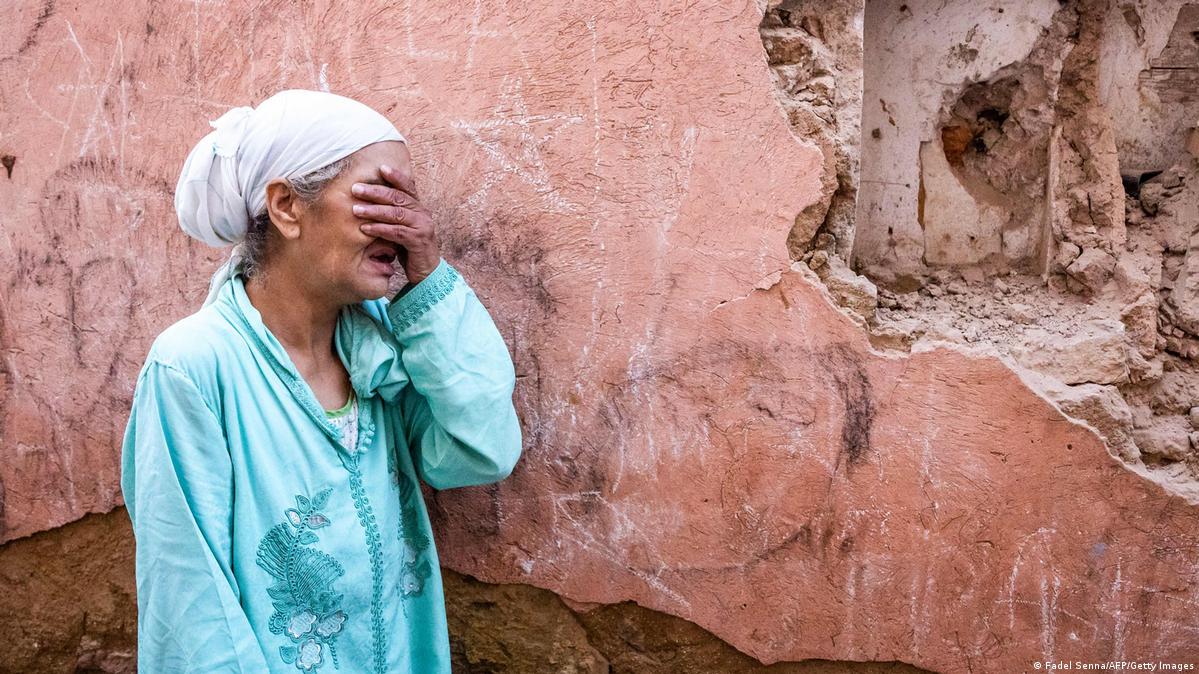
Difficult search-and-rescue mission
People watch from a safe distance as emergency response workers search for survivors. On Sunday, the Arabic-language Moroccan online news site Hespress reported that Spanish search-and-rescue teams with sniffer dogs had arrived in the country to support local efforts.Image: Mosa'ab Elshamy/AP/dp
A magnitude 6.8 earthquake has struck Morocco with an epicenter 75 kilometers west of Marrakech, leaving more than 2,000 dead. Rescue efforts are still underway as the threat of aftershocks looms.Image: Fadel Senna/AFP/Getty Images

Difficult search-and-rescue mission
People watch from a safe distance as emergency response workers search for survivors. On Sunday, the Arabic-language Moroccan online news site Hespress reported that Spanish search-and-rescue teams with sniffer dogs had arrived in the country to support local efforts.Image: Mosa'ab Elshamy/AP/dp

Powerful earthquakes are nearly always followed by smaller aftershocks, which occur because the tectonic plates at the epicenter continue moving until they eventually settle again. Aftershocks, too, can cause serious damage. Buildings that were damaged during the original quake may collapse, leading to more deaths, injuries and displacement.
The worst earthquakes in recorded history
Andreas Noll
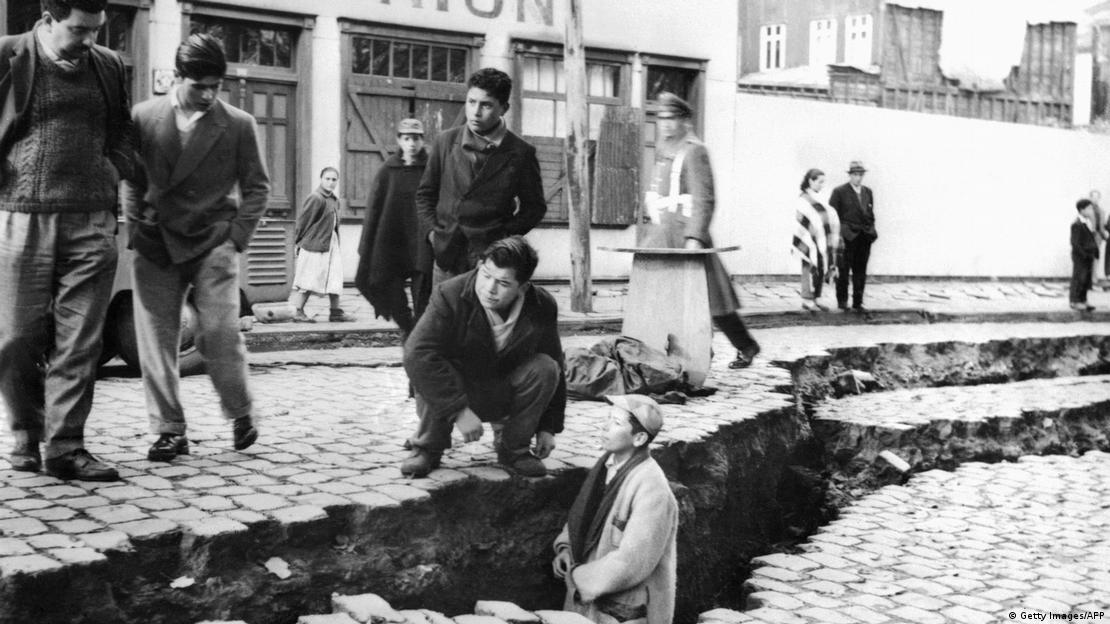
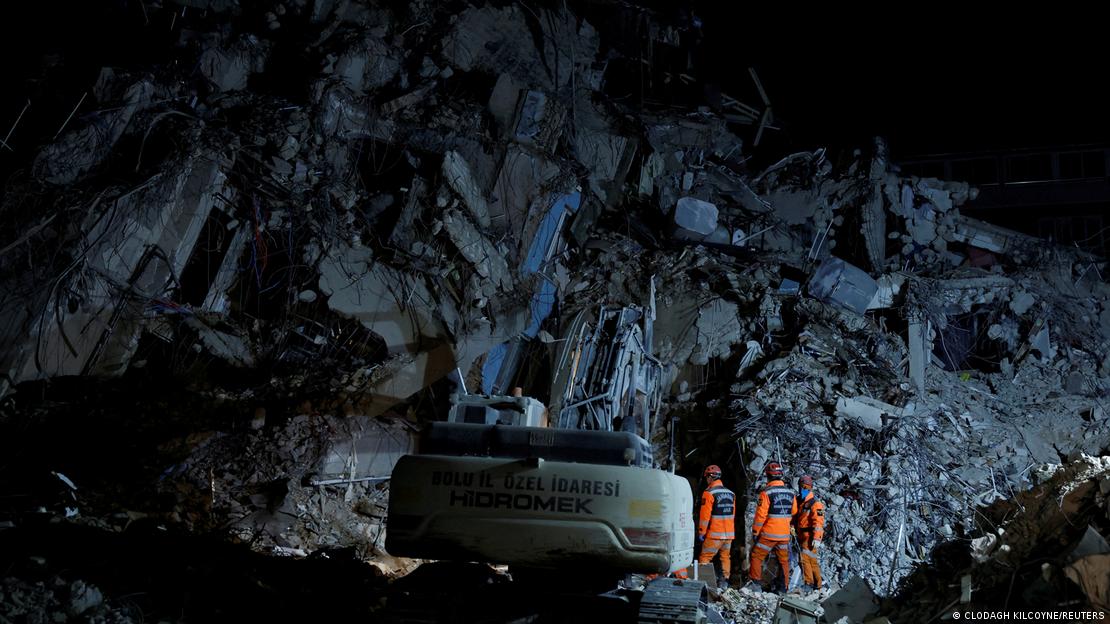
Earthquakes and tsunamis
Tsunamis often occur when the earth quakes below or near the sea. They can cause fatalities far from a quake's epicenter. Nobody died directly in the 9.1 magnitude Indian Ocean quake, also known as the Sumatra-Andaman quake of 2004, but the tsunami that it unleashed, with tidal waves of up to 30 meters, killed over 240,000 people in 14 countries in South and Southeast Asia. It was thus one of the deadliest quakes in recorded history.
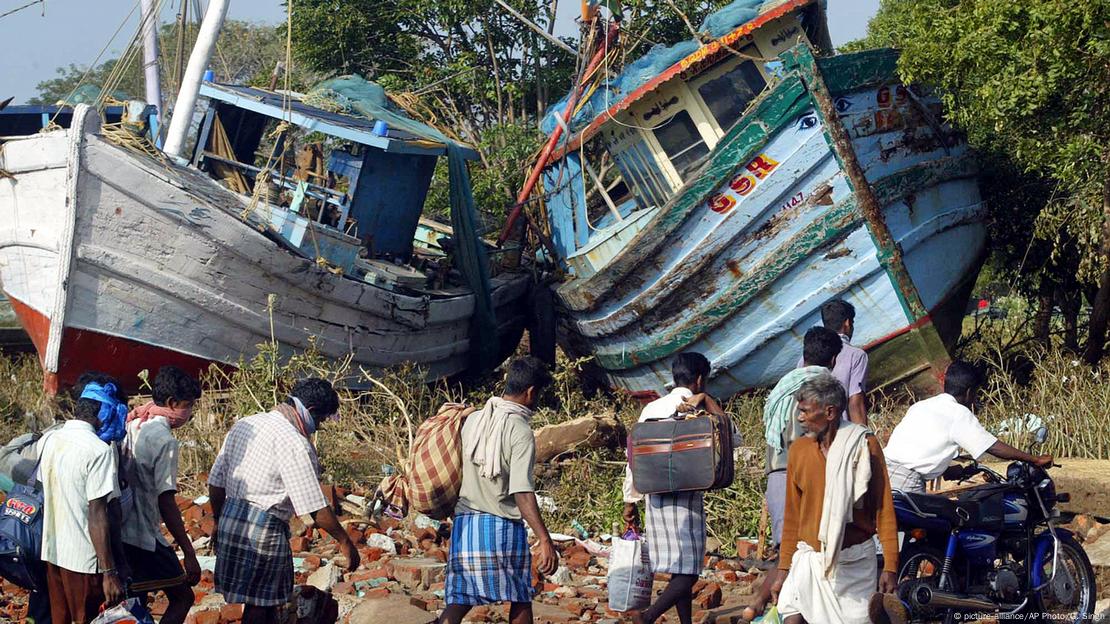
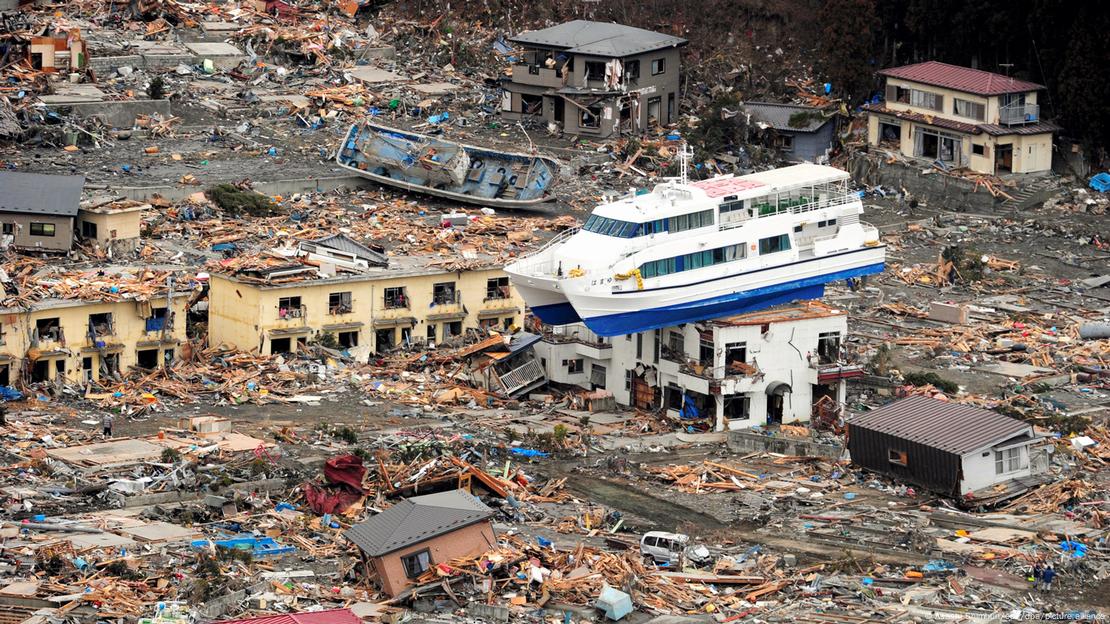
Two deadly quakes in China
On January 23, 1556, an earthquake occurred in the Shaanxi province of central China. It was described as follows by chroniclers of the time: "Various misfortunes took place. Mountains and rivers changed places and roads were destroyed. In some places, the ground suddenly rose up and formed new hills, or it sank abruptly and became new valleys. In other areas, a stream burst out in an instant, or the ground broke and new gullies appeared. Huts, official houses, temples and city walls collapsed all of a sudden."
Some 830,000 people are thought to have been killed in the quake, which is estimated to have measured 8.25 on the MMS, and its aftermath. It is the deadliest recorded quake in history.
Probably the second deadliest earthquake in recorded history and the worst of the past 100 years also occurred in China. At 3:42 local time on July 28, 1976, a 7.1 magnitude quake almost destroyed the city of Tangshan, which today has a population of over 7 million. The epicenter was 20 kilometers southwest of Tangshan, but the tremors were felt 140 kilometers away in Beijing. Over five million homes were uninhabitable afterward, and hundreds of thousands of people died. Though the authorities officially registered 242,000 fatalities, the real death toll is estimated at 650,000.
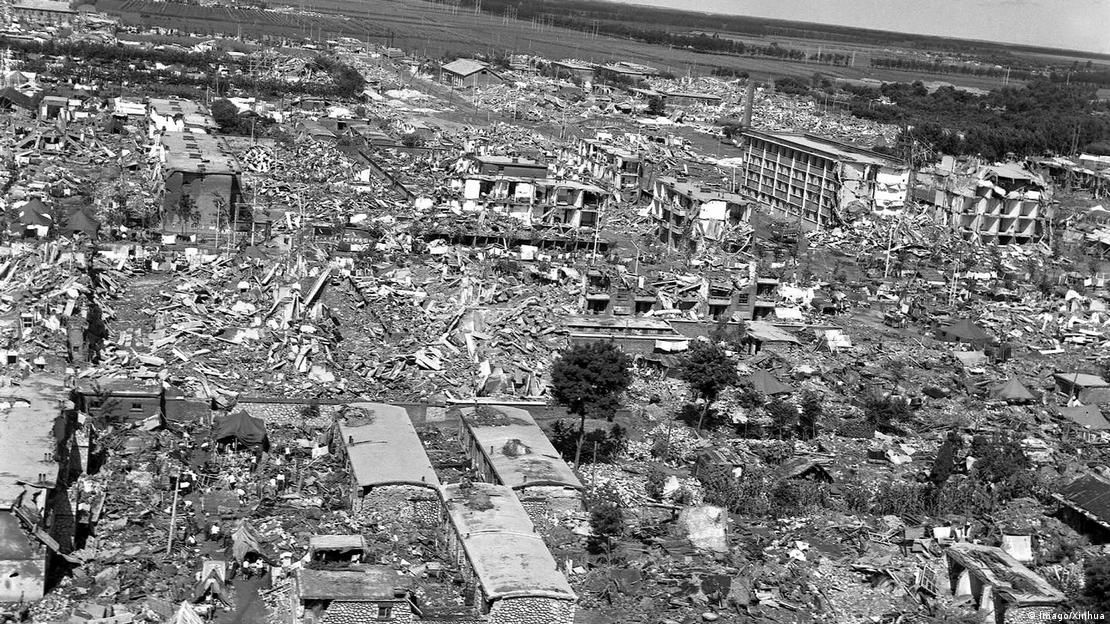
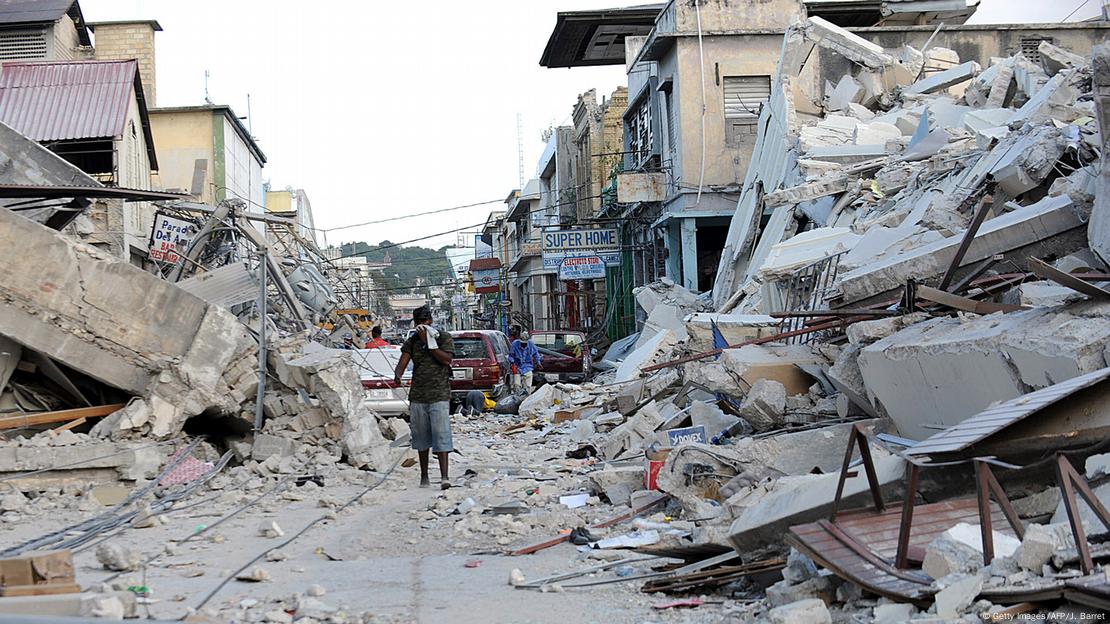
International relief aid
These days, as is the case today in Syria and Turkey, international relief organizations are quick to mobilize when earthquakes occur. This also happened in 2010 when an earthquake struck Haiti at 16:53 local time on January 12. With a magnitude of 7, it was not the most powerful quake of the past century, but it was one of the worst in terms of its devastating impact.
Haiti, the poorest country in the western hemisphere, was ill-prepared for yet another natural disaster. In some regions, 90% of homes were destroyed. There are still no exact casualty figures, but international organizations estimate that the number of victims lies between 200,000 and 500,000.
This article was originally written in German.
Originally published on February 10, 2023, this article was updated and republished on September 9, 2023, following the deadly earthquake in Morocco.
Andreas Noll
DW
09/09/2023
The earthquake in Morocco is already one of the worst natural disasters in the past 100 years. DW looks at some of the deadliest quakes on record.
09/09/2023
The earthquake in Morocco is already one of the worst natural disasters in the past 100 years. DW looks at some of the deadliest quakes on record.
The village of Besnia in Syria was devastated by the quake
Image: OMAR HAJ KADOUR/AFP
The earthquake of May 22, 1960, that struck the town of Valdivia in southern Chile is the most powerful ever recorded and has become known as the Great Chilean Earthquake. It is thought to have measured 9.5 on the moment magnitude scale (MMS). Two tectonic plates shifted by over 30 meters, releasing huge volumes of energy in seismic waves. Entire cities were reduced to rubble in just 10 minutes. About 6,000 people died and resulting tsunamis killed 130 people in Japan and more than 60 in Hawaii.
The earthquake of May 22, 1960, that struck the town of Valdivia in southern Chile is the most powerful ever recorded and has become known as the Great Chilean Earthquake. It is thought to have measured 9.5 on the moment magnitude scale (MMS). Two tectonic plates shifted by over 30 meters, releasing huge volumes of energy in seismic waves. Entire cities were reduced to rubble in just 10 minutes. About 6,000 people died and resulting tsunamis killed 130 people in Japan and more than 60 in Hawaii.

The Valdivia earthquake is the strongest ever to be recorded
Image: Getty Images/AFP
While the US was only marginally affected by that Chilean earthquake, four years later on Good Friday, it became the epicenter of the second most powerful quake ever recorded. The 9.2 magnitude Great Alaskan Earthquake lasted some four minutes and destroyed large parts of the infrastructure in southern and central Alaska. The state's largest city, Anchorage, sustained massive damage, with entire roads being destroyed. Post-quake tsunamis affected a series of coastal towns, with 139 people drowning in the ensuing floods. However, lives were saved due to the fact that it was Good Friday and many businesses were shut. There were also no children in the schools that collapsed.
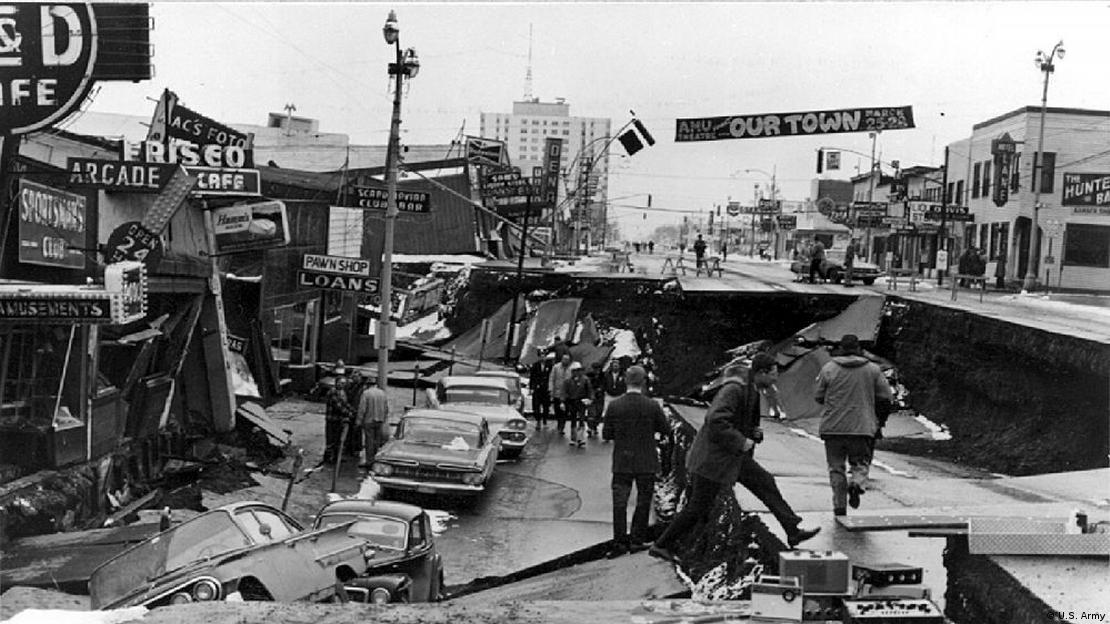
While the US was only marginally affected by that Chilean earthquake, four years later on Good Friday, it became the epicenter of the second most powerful quake ever recorded. The 9.2 magnitude Great Alaskan Earthquake lasted some four minutes and destroyed large parts of the infrastructure in southern and central Alaska. The state's largest city, Anchorage, sustained massive damage, with entire roads being destroyed. Post-quake tsunamis affected a series of coastal towns, with 139 people drowning in the ensuing floods. However, lives were saved due to the fact that it was Good Friday and many businesses were shut. There were also no children in the schools that collapsed.

Much of the Alaskan infrastructure was damaged by the Good Friday earthquake
Image: U.S. Army
In February 2023, Turkey and Syria were struck by earthquakes roughly 12 hours and 95 kilometers apart and measuring 7.8 and 7.7 on the MMS, the largest in Turkey in over eight decades. The earthquakes killed more than 50,000 people in Turkey and at least 8,400 in Syria and left an estimated 1.5 million people homeless.
In February 2023, Turkey and Syria were struck by earthquakes roughly 12 hours and 95 kilometers apart and measuring 7.8 and 7.7 on the MMS, the largest in Turkey in over eight decades. The earthquakes killed more than 50,000 people in Turkey and at least 8,400 in Syria and left an estimated 1.5 million people homeless.

Recovery teams in Antakya, Turkey, and across the region searched the rubble for days
Image: CLODAGH KILCOYNE/REUTERS
Earthquakes and tsunamis
Tsunamis often occur when the earth quakes below or near the sea. They can cause fatalities far from a quake's epicenter. Nobody died directly in the 9.1 magnitude Indian Ocean quake, also known as the Sumatra-Andaman quake of 2004, but the tsunami that it unleashed, with tidal waves of up to 30 meters, killed over 240,000 people in 14 countries in South and Southeast Asia. It was thus one of the deadliest quakes in recorded history.

The 2004 tsunami was one of the worst natural disasters in history
Image: picture-alliance/AP Photo/G. Singh
In 2011, an undersea earthquake in the Tohoku region of Japan triggered a tsunami that in turn caused the worst nuclear disaster since the Chernobyl accident of 1986. Measuring 9.1 on the moment magnitude scale, the quake caused powerful tsunami waves that flooded an area on Japan's Pacific coast greater than 500 square kilometers (193 square miles).
Some 22,000 people were killed and about 400,000 buildings collapsed or were completely destroyed. A 14-meter-high wave hit the nuclear power plant in Fukushima, causing meltdowns in three reactors and radioactive discharge that led to many countries revising their relationship with nuclear power.
In 2011, an undersea earthquake in the Tohoku region of Japan triggered a tsunami that in turn caused the worst nuclear disaster since the Chernobyl accident of 1986. Measuring 9.1 on the moment magnitude scale, the quake caused powerful tsunami waves that flooded an area on Japan's Pacific coast greater than 500 square kilometers (193 square miles).
Some 22,000 people were killed and about 400,000 buildings collapsed or were completely destroyed. A 14-meter-high wave hit the nuclear power plant in Fukushima, causing meltdowns in three reactors and radioactive discharge that led to many countries revising their relationship with nuclear power.

In 2011, an earthquake and tsunami caused devastation to parts of north-eastern Japan
Image: Asashi Shimbun/epa/dpa/picture alliance
Two deadly quakes in China
On January 23, 1556, an earthquake occurred in the Shaanxi province of central China. It was described as follows by chroniclers of the time: "Various misfortunes took place. Mountains and rivers changed places and roads were destroyed. In some places, the ground suddenly rose up and formed new hills, or it sank abruptly and became new valleys. In other areas, a stream burst out in an instant, or the ground broke and new gullies appeared. Huts, official houses, temples and city walls collapsed all of a sudden."
Some 830,000 people are thought to have been killed in the quake, which is estimated to have measured 8.25 on the MMS, and its aftermath. It is the deadliest recorded quake in history.
Probably the second deadliest earthquake in recorded history and the worst of the past 100 years also occurred in China. At 3:42 local time on July 28, 1976, a 7.1 magnitude quake almost destroyed the city of Tangshan, which today has a population of over 7 million. The epicenter was 20 kilometers southwest of Tangshan, but the tremors were felt 140 kilometers away in Beijing. Over five million homes were uninhabitable afterward, and hundreds of thousands of people died. Though the authorities officially registered 242,000 fatalities, the real death toll is estimated at 650,000.

Much of the city of Tangshan lay in rubble after an earthquake in 1976
Image: Imago/Xinhua
One of the worst of a series of earthquakes to have struck East Asia in the 1920s also took place in China, the magnitude 7.8 Haiyuan earthquake of December 16, 1920. Landslides and ground fissures buried villages and caused rivers to change course. Some 200,000 people were killed.
One of the worst of a series of earthquakes to have struck East Asia in the 1920s also took place in China, the magnitude 7.8 Haiyuan earthquake of December 16, 1920. Landslides and ground fissures buried villages and caused rivers to change course. Some 200,000 people were killed.

One of the poorest countries in the world, Haiti has yet to recover from the devastation caused by an earthquake in 2010
Image: Getty Images/AFP/J. Barret
International relief aid
These days, as is the case today in Syria and Turkey, international relief organizations are quick to mobilize when earthquakes occur. This also happened in 2010 when an earthquake struck Haiti at 16:53 local time on January 12. With a magnitude of 7, it was not the most powerful quake of the past century, but it was one of the worst in terms of its devastating impact.
Haiti, the poorest country in the western hemisphere, was ill-prepared for yet another natural disaster. In some regions, 90% of homes were destroyed. There are still no exact casualty figures, but international organizations estimate that the number of victims lies between 200,000 and 500,000.
This article was originally written in German.
Originally published on February 10, 2023, this article was updated and republished on September 9, 2023, following the deadly earthquake in Morocco.


No comments:
Post a Comment